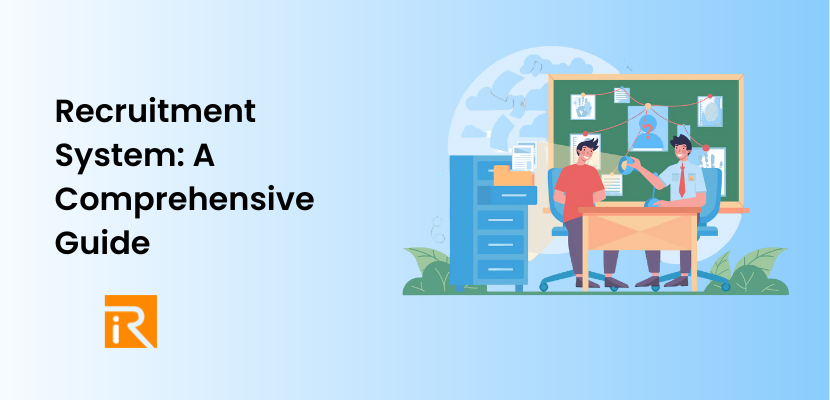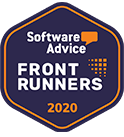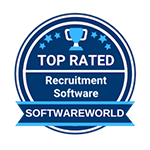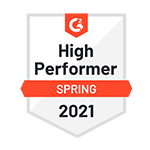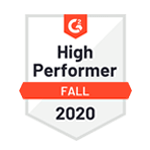In the digital age, recruitment system has become the central nervous system of hiring processes. It’s no longer a mere add-on; it’s fundamental.
Remember the days of job boards pinned on breakroom walls or resumes cluttering desks in manila folders? Those days are history. Today, recruitment systems offer a streamlined, efficient, and often automated approach to finding the right talent, ensuring that HR teams everywhere can focus on what truly matters: people.
Types of Recruitment Systems
Diving deeper into the tools that have reshaped hiring, let’s demystify some buzzwords:
Applicant Tracking Systems (ATS)
Picture a vigilant sentry. That’s your best ATS. Always on the lookout, it captures, categorizes, and conserves every application. From resume uploads to interview schedules, the ATS ensures nothing goes amiss.
Recruitment Marketing Platforms
Consider these your organization’s personal advertisers. They’re not just posting job descriptions; they’re selling your company culture. By leveraging data and tapping into niche job markets, these platforms amplify your vacancies to resonate with the perfect audience.
Employee Referral Tools
It’s the age-old concept of referrals, only digitized and more potent. An employee knows your company culture better than most. These tools tap into their networks, potentially finding candidates who align seamlessly with your ethos.
Mobile Recruitment Tools
In an era where our phones are almost extensions of ourselves, recruitment hasn’t lagged. Mobile recruitment tools adapt the hiring process for smaller screens, making sure a potential job match is only a swipe or click away. Whether it’s quick applications or instant job alerts, these tools resonate with the fast-paced lives of modern candidates.
Features of a Recruitment System
Let’s journey further and dissect what truly sets apart a competent recruitment system from a basic one:
Seamless Job Posting Integration
Imagine casting a net, but instead of water, it’s over a vast digital landscape. A robust recruitment system ensures your job listings effortlessly land across multiple platforms, from major job boards to niche career sites. It’s not just about reaching many but reaching right.
Efficient Candidate Screening and Ranking
Are you sifting through a sea of applications manually? Old news. Today’s systems actively screen resumes, rank candidates based on set criteria, and highlight the best fits. This feature reduces bias and guarantees only the most suitable candidates make it to your desk.
Interview Scheduling
Juggling diaries and clashing schedules can be a logistical nightmare. Modern recruitment systems streamline this. With a few clicks, they sync with all parties involved, offering slot options and automatically setting up reminders. The result? No more no-shows or double bookings.
Insightful Analytics and Reporting
Data, when interpreted right, speaks volumes. Recruitment systems today come equipped with analytics tools that offer insights on everything from the effectiveness of your job ads to the efficiency of your hiring funnel. With these reports in hand, HR teams can make informed decisions, continually refining their hiring strategies.
Benefits of Implementing a Recruitment System
In the intricate dance of hiring, a recruitment system is a choreographer ensuring every step flows seamlessly. Let’s delve into why these systems have become indispensable:
Time and Cost Efficiency
Think of it as an express lane on a busy highway. With the automation and streamlining capabilities of a recruitment system, you’re looking at significantly reduced hiring timelines and costs. Instead of trawling through hundreds of CVs manually, you can instantly zero in on top contenders. The quicker you hire, the more you save in both time and money.
Improved Candidate Experience
First impressions matter. For potential employees, the hiring process is their introduction to your company. A smooth, efficient recruitment process, free of hiccups, speaks volumes about your organizational efficiency. And a happy candidate, whether they land the job or not, can be a brand ambassador in their own right.
Compliance and Risk Management
Navigating the legal intricacies of hiring can be daunting. Modern recruitment systems come built-in with features that adhere to the latest employment laws and data protection regulations. By standardizing processes, they ensure you’re not unwittingly stepping into legal quagmires.
Enhanced Collaboration
In any hiring process, collaboration is key. Recruitment systems equip your HR team with shared platforms where they can discuss candidates, share feedback, and make joint decisions. No more scattered email threads or missed memos; everyone stays informed and aligned, driving towards a unified hiring goal.
Choosing the Right Recruitment System
The marketplace for recruitment systems is vast, but picking the right one doesn’t have to be a daunting task. Here’s how you can select the ideal system for your unique needs:
Understand Your Organizational Needs
Before embarking on the quest, assess your landscape. What does your company require? Do you need automated interviews or simply a tool to track applicants? Knowing what you need helps you narrow down the options, ensuring you aren’t paying for unnecessary features.
Do Your Homework
Research is paramount. Start by comparing various vendors, looking at features, reliability, and customer service. Don’t just rely on what’s on the vendors’ websites; read independent reviews and ask for referrals. The experiences of other users often provide the most valuable insights.
Ensure Integration with Current HR Software
If you’ve already invested in HR tools, your new recruitment system must play nicely with them. Check with vendors to understand how their products can integrate with what you already have. A system that doesn’t incorporate smoothly can lead to more headaches rather than simplifying your process.
Discuss the Price, But Keep Focus on Features
Budget talks are essential, but don’t let cost overshadow functionality. Understand what’s vital for your hiring process and ensure those features are included in whatever package you select. While negotiating, remember that skimping on critical elements might save you money in the short term but could lead to inefficiencies later.
Challenges and Common Issues in Recruitment Systems
Occasional Technical Hitches
Even the most advanced recruitment systems can experience occasional technical hitches. Such glitches can disrupt the entire recruitment process. To counter this, you must ensure robust support by having a dedicated technical team on standby. Regular system checks, timely updates, and immediate troubleshooting can reduce these hitches and keep your recruitment process running smoothly.
Security Concerns with Personal Data
Handling personal data comes with significant responsibility. Your recruitment system likely stores vast amounts of personal and sensitive information. It’s crucial to prioritize privacy and implement strong security measures. Utilize encryption, secure access controls, and regular security audits to protect this data. Ensuring compliance with privacy regulations, such as GDPR, will build trust and safeguard the integrity of your recruitment process.
Training for Team Members
A recruitment tool is only as effective as the team that operates it. Ensure that your team knows how to use the tool proficiently by providing comprehensive training. From understanding the basic functionalities to advanced features, training empowers your team to use the tool optimally. Continuous education and support enhance efficiency and reduce the risk of human error.
Avoiding Bias in Automated Systems
Automated systems, while efficient, are not immune to perpetuating biases. Whether it’s in screening resumes or assessing candidates, algorithms might inadvertently favor certain groups. It’s vital to ensure that these systems are not reinforcing stereotypes or unfair practices. Regularly review and update the algorithms, include diverse perspectives in designing the system, and consult with experts in bias mitigation to foster a fair and unbiased recruitment process.
Case Studies and Success Stories
Small Businesses
Small businesses often face challenges in managing recruitment with limited HR staff. By adopting an Applicant Tracking System (ATS), they have successfully streamlined their entire hiring process. The ATS automates tedious tasks, allowing the staff to focus on selecting suitable candidates. Efficiency in hiring not only saves time but also aligns the recruitment process with the business’s needs and goals.
Large Corporations
Large corporations have different recruitment challenges, often needing to handle vast numbers of applications. By embracing recruitment marketing platforms, many have achieved remarkable success. These platforms enable corporations to target and attract more suitable candidates, resulting in a 50% increase in quality applications. The integrated marketing approach enhances the applicant experience, promotes the employer brand, and ultimately leads to better hiring outcomes.
Non-profits
In the non-profit sector, finding employees who are passionate and aligned with the organization’s cause is paramount. Many non-profits have turned to employee referral tools to achieve this goal. These tools facilitate the recruitment of individuals already connected to current employees, ensuring a cultural and mission fit. By leveraging personal networks and focusing on passionate hires, non-profits not only enhance their recruitment efficiency but also foster a committed and aligned workforce.
Future Trends in Recruitment Technology
AI & Machine Learning
The use of AI and Machine Learning in recruitment is opening doors to fascinating possibilities. These technologies are advancing to predict a candidate’s success within a role more accurately. By analyzing data from resumes, interviews, and assessments, organizations will soon be able to forecast performance and cultural fit with higher precision. This data-driven approach promises to make hiring more efficient and effective.
Virtual Reality
Virtual Reality (VR) is redefining the recruitment experience. From virtual office tours to immersive skill assessments, VR offers candidates a tangible glimpse into their potential work environment. Employers are leveraging VR to engage candidates and assess their skills in real-world scenarios. This immersive technology enhances the recruitment process, creating a more interactive and authentic experience for both candidates and recruiters.
Personalization
Personalization is becoming a key trend in recruitment technology. Tailoring the candidate’s experience to their skills, preferences, and aspirations creates a more engaging and satisfying recruitment process. Employers are utilizing algorithms and tools to provide customized job recommendations, interview processes, and onboarding experiences. This level of personalization strengthens the connection between candidates and companies, fostering higher satisfaction and retention.
Ethical Hiring
As recruitment continues to go digital, ensuring unbiased and fair practices becomes even more essential. Ethical hiring focuses on creating recruitment processes that are transparent, unbiased, and inclusive. Organizations are working to eliminate biases from automated systems and promote diversity and equity. The integration of fairness assessments, audits, and continuous monitoring assures that digital recruitment upholds the highest ethical standards. The future of recruitment lies not just in leveraging technology but in doing so responsibly and inclusively.
Conclusion
In the digital age, an efficient recruitment system has transformed from being a convenient tool to an indispensable asset. The dynamic nature of recruitment requires modern solutions that cater to the specific needs of various organizations. Be it a budding startup or an established corporation, advancements in recruitment technology offer opportunities to streamline processes, enhance the candidate experience, and achieve the best hiring outcomes. The future looks promising with exciting developments like AI, Virtual Reality, and personalized recruitment experiences on the horizon.
Recommendations
Understanding your organization’s unique needs is crucial in selecting the right recruitment technology. Start by evaluating your current hiring processes, identifying the challenges, and recognizing the goals you aim to achieve. Explore the various solutions available, from Applicant Tracking Systems for small businesses to advanced AI-driven tools for larger corporations. Invest in training your team to leverage these tools effectively and keep an eye on emerging trends to stay ahead. Emphasizing ethical hiring practices and personalization can further align recruitment with your organization’s values and vision. Dive deep into the options, understand your needs, and pick wisely to unlock the full potential of modern recruitment systems.
Intrigued by the endless possibilities in the recruitment landscape? Dive deeper into the world of recruitment systems with RecruitBPM. Whether you’re a small business or a large corporation, we have tailored solutions that fit your needs. Contact us for more insights or click here for a free demo.


